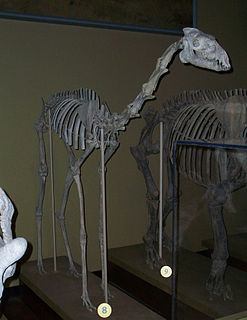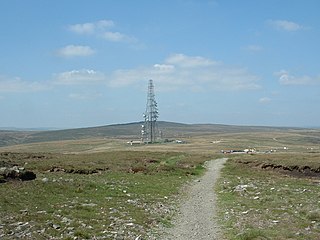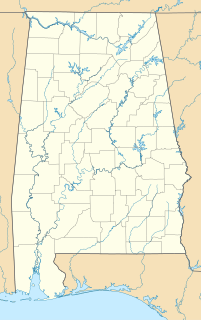Treatment

Management focuses on the use of supports (or shackles) to bring the legs back towards the midline. [1]
Spraddle leg, also called splayed leg, is a condition in poultry in which the legs of newly born chicks are splayed laterally, meaning that they are unable to bear weight.
The cause has been attributed to a range of factors, although a slippery floor surface is most commonly implicated. [1] [2]

Management focuses on the use of supports (or shackles) to bring the legs back towards the midline. [1]
A splay tree is a binary search tree with the additional property that recently accessed elements are quick to access again. Like self-balancing binary search trees, a splay tree performs basic operations such as insertion, look-up and removal in O(log n) amortized time. For many sequences of non-random operations, splay trees perform better than other search trees, even performing better than O(log n) for sufficiently non-random patterns, all without requiring advance knowledge of the pattern. The splay tree was invented by Daniel Sleator and Robert Tarjan in 1985.
Splay may refer to:

Ensifera is a suborder of insects that includes the various types of crickets and their allies including: true crickets, camel crickets, bush crickets or katydids, grigs, weta and Cooloola monsters. This and the suborder Caelifera make up the order Orthoptera. Ensifera is believed to be a more ancient group than Caelifera, with its origins in the Carboniferous period, the split having occurred at the end of the Permian period. Unlike the Caelifera, the Ensifera contain numerous members that are partially carnivorous, feeding on other insects, as well as plants.

Oxydactylus is an extinct genus of camelid endemic to North America. It lived from the Late Oligocene to the Middle Miocene, existing for approximately 14 million years. The name is from the Ancient Greek οξύς and δάκτυλος.

Deuterosaurus is an extinct genus of dinocephalian therapsids, one of the non-mammalian synapsids dominating the land during the late Paleozoic.

Cow-hocked (adj.) or cow hocks (n.) describes a defect in the conformation of four-legged animals, primarily of livestock and horses, but also of dogs and cats.
A crevasse splay is a sedimentary fluvial deposit which forms when a stream breaks its natural or artificial levees and deposits sediment on a floodplain. A breach that forms a crevasse splay deposits sediments in similar pattern to an alluvial fan deposit. Once the levee has been breached the water flows out of its channel. As the water spreads onto the flood plain sediments will start to fall out of suspension as the water loses energy. The resulting deposition can create graded deposits similar to those found in Bouma sequences. In some cases crevasse splays can cause a river to abandon its old river channel, a process known as avulsion. Breaches that form a crevasse splay deposits occur most commonly on the outside banks of meanders where the water has the highest energy. Crevasse splay deposits can range in size. Larger deposits can be 6 m (20 ft) thick at the levee and spread 2 km (1.2 mi) wide, while smaller deposits may only be 1 cm (0.39 in) thick.
A link/cut tree is a data structure for representing a forest, a set of rooted trees, and offers the following operations:
A gyn is an improvised three legged lifting device used on sailing ships. It provides more stability than a derrick or sheers, and requires no rigging for support. Without additional support, however, it can only be used for lifting things directly up and down. Gyns may also be used to support either end of a ropeway.

Shear legs, also known as sheers, shears, or sheer legs, are a form of two-legged lifting device. Shear legs may be permanent, formed of a solid A-frame and supports, as commonly seen on land and the floating sheerleg, or temporary, as aboard a vessel lacking a fixed crane or derrick.

Windy Hill in the South Pennines within the Metropolitan Borough of Rochdale in Greater Manchester, England, rises to 389 m (1,276 ft) metres above sea level.

The John A. Coate House is a historic house located in Grove Hill, Alabama.
A foot is the floor level termination of furniture legs. Legless furniture may be slightly raised off of the floor by their feet.

Nakazonae (中備・中具) is a Japanese classification of several intercolumnar struts of different origin installed in the intervals between bracket complexes (tokyō) at wooden architectures in East Asia.

The rigid double splayed loop in the bight is a knot that contains two parallel loops. Clifford Ashley wrote that it is "one of the firmest of the Double Loops since the two loops do not directly communicate with each other".. It is a variation of the alpine butterfly knot.

Chrysops caecutiens, common name splayed deer fly, is a species of horse fly belonging to the family Tabanidae. It is also known by the colloquial name Scotch Cleg.

Cass Street Park is a public art work by American artist Marina Lee, located on the east side of Milwaukee, Wisconsin at 1647 N. Cass St. The work was created as part of a revitalization effort.

The Laura Watson House was a historic house in Gainesville, Sumter County, Alabama. The one-story, wood frame, spraddle roof house was built for Laura Watson and her son, Booker, circa 1900. It was significant as a surviving example of what was once a typical type of dwelling for small African American freeholders in Alabama. It was added to the National Register of Historic Places on October 3, 1985.
Dove Dale, also known as the Archibald Dove House, Daniel Dove House, and Grover Bryant House, is a historic plantation house near Darlington, Darlington County, South Carolina. The original section dates to about 1805, with later 19th- and early 20th-century alterations. It is a 1½-story frame double-pile, spraddle-roofed house. The house features a front porch with six wood piers. A contributing small fish pond is an early landscape feature of the front lawn. Surrounding the house are agricultural fields that have continued under cultivation for over 200 years.